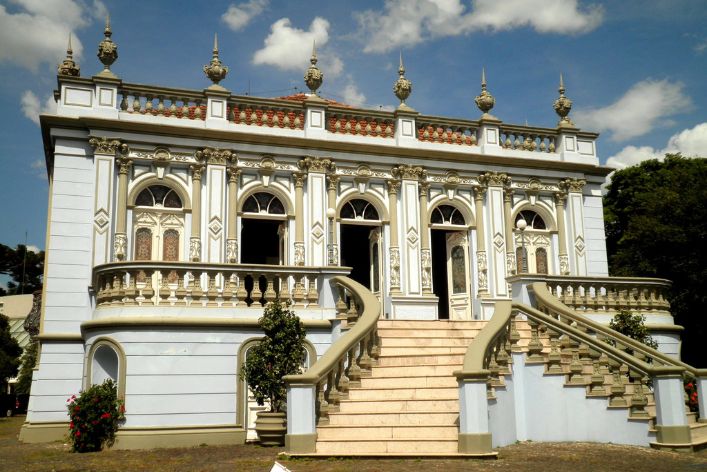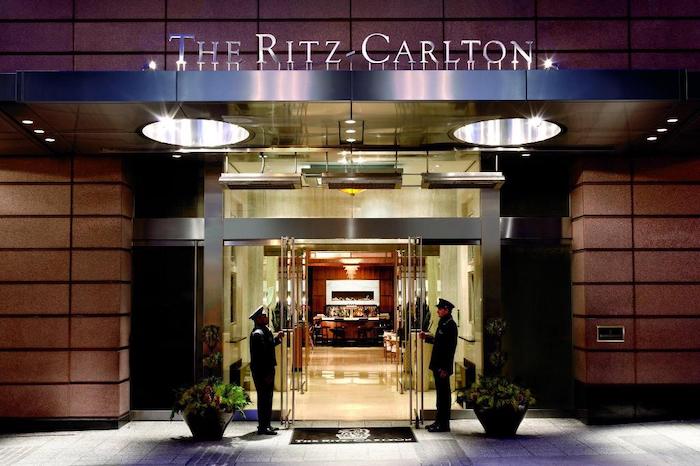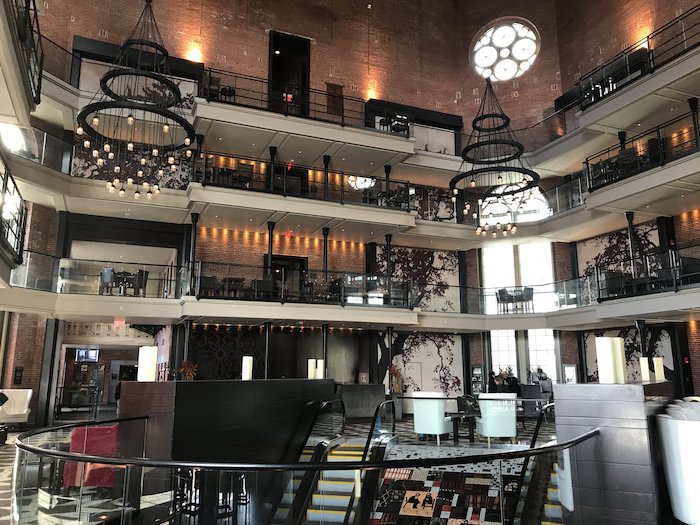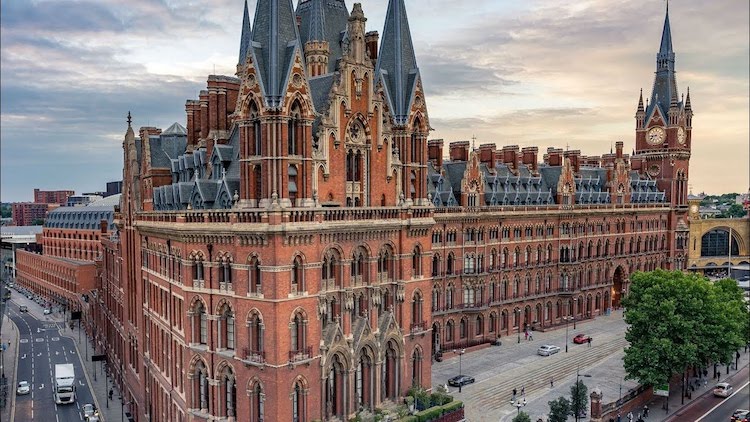The trend of transforming historic buildings into luxury hotels has gained popularity in recent years and for good reason. Developers and tourists alike have been drawn to the unique charm and character of these historic buildings, which provide a glimpse into the past while also offering modern amenities and luxury accommodations.

Developers benefit from historic hotel conversions, repurposing buildings, increasing property values, and attracting new travelers. These hotels also have the potential to contribute to the local economy by creating jobs and stimulating tourism.
For tourists, staying in a historic hotel offers a one-of-a-kind experience that cannot be replicated in a modern building. Guests can experience the destination’s history and culture, enjoying original architecture, antique furnishings, and historic artwork. Historic hotels’ prime locations in city centers or near tourist attractions make them appealing to travelers.
Despite the many benefits, converting a historic building into a luxury hotel is not without its challenges. Developers must navigate complex legal and regulatory requirements, as well as balance the preservation of the building’s historic character with the need for modern amenities and guest comfort.
Overall, the trend of transforming historic buildings into luxury hotels shows no signs of slowing down, and for good reason. These unique properties offer a blend of history and luxury that cannot be found elsewhere, providing both developers and tourists with a valuable investment opportunity.
Benefits of Converting Historic Buildings into Hotels
Historic buildings are more than just bricks and mortar; they are an essential part of our cultural heritage. Converting these buildings into luxury hotels provides numerous benefits, both for the local community and for visitors. In this section, we will explore some of the key benefits of converting historic buildings into hotels.
1. Preservation of Cultural Heritage
Historic buildings are an irreplaceable part of our cultural heritage, and converting them into hotels is a way of preserving them for future generations. By repurposing these buildings, they are given a new lease of life, which ensures that they are maintained and cared for. The preservation of these buildings not only maintains their architectural and historical value, but it also contributes to the overall character and sense of place of the surrounding area.
2. Creating New Tourism Opportunities
Converting historic buildings into hotels creates new opportunities for tourism. Historic buildings are often located in prime locations, such as city centers or near popular tourist attractions, which makes them an attractive option for visitors. These hotels provide an opportunity for tourists to stay in unique, one-of-a-kind accommodations that cannot be found elsewhere. This can help to attract new visitors to the area, which can have a positive impact on the local economy.
3. Contributing to Local Economies
Historic hotel conversions can have a significant impact on the local economy. By creating new jobs and stimulating tourism, these hotels can provide a boost to the local economy. Additionally, the restoration and renovation of historic buildings often require the use of local materials and labor, which can further contribute to the local economy.
4. Providing Unique and Memorable Experiences for Guests
Perhaps the most significant benefit of converting historic buildings into hotels is the unique and memorable experience that they provide for guests. These buildings offer a glimpse into the past and often feature original architectural details, antique furnishings, and historic artwork. The sense of history and character that these buildings provide creates a unique and memorable experience that cannot be replicated in a modern building.
In summary, converting historic buildings into luxury hotels provides numerous benefits, both for the local community and for visitors. The preservation of these buildings helps to maintain our cultural heritage, while also providing new tourism opportunities and contributing to the local economy. Additionally, these hotels provide guests with a unique and memorable experience that cannot be found elsewhere.
Read: Hotel Conversions: Turning Offices into Havens
Challenges of Converting Historic Buildings into Hotels
While converting historic buildings into luxury hotels offers numerous benefits, it is not without its challenges. In this section, we will explore some of the main challenges that developers face when converting historic buildings into hotels.
1. Legal and Regulatory Hurdles
Converting a historic building into a hotel often requires navigating complex legal and regulatory requirements. These requirements can vary depending on the location of the building and its historical significance. Obtaining the necessary permits and approvals can be a time-consuming and costly process, and failure to comply with regulations can result in fines or legal action.
2. Maintaining the Historic Character of the Building
One of the key challenges of converting a historic building into a hotel is maintaining its historic character. Many historic buildings are protected by preservation laws, which can limit the changes that can be made to the building’s exterior and interior. Balancing the need to modernize the building and provide modern amenities with the need to maintain its historic character can be a delicate balancing act.
3. Upgrading Infrastructure and Modern Amenities
In order to provide a luxury hotel experience, historic buildings often require significant upgrades to their infrastructure and modern amenities. This can include the installation of air conditioning, elevators, and modern plumbing and electrical systems. However, these upgrades must be done in a way that does not compromise the building’s historic character or structural integrity.
4. Balancing Preservation with Profitability
Perhaps the biggest challenge of converting a historic building into a hotel is balancing preservation with profitability. Maintaining the historic character of the building and complying with preservation laws can be costly, and may limit the ability to add new rooms or amenities. Additionally, the high cost of renovation and upkeep may make it difficult to achieve a profitable return on investment.
In order to overcome these challenges, developers must carefully plan and execute their conversions. This may involve conducting thorough research and feasibility studies, hiring experienced architects and designers, and engaging with local stakeholders and communities. Flexibility and adaptability throughout the process are also important, as unexpected challenges and opportunities may arise.
All in all, converting historic buildings into luxury hotels presents a number of challenges, including legal and regulatory hurdles, maintaining the historic character of the building, upgrading infrastructure and modern amenities, and balancing preservation with profitability. However, with careful planning and execution, these challenges can be overcome, and historic buildings can be transformed into unique and valuable hotel properties.
Read: From Vacant Land to Hotel Empire: Success Stories
Examples of Successful Historic Hotel Conversions
There are countless examples of successful historic hotel conversions around the world. In this section, we will explore some of the most notable examples of these conversions, and what makes them so successful.
1. The Plaza Hotel in New York City

The Plaza Hotel, located on Fifth Avenue in New York City, is one of the most iconic and recognizable hotels in the world. Originally built in 1907, the building was converted into a hotel in 1910 and has since undergone several renovations and restorations. The hotel’s luxurious accommodations and prime location have made it a popular choice among celebrities and high-profile guests.
2. The Ritz-Carlton in Boston

The Ritz-Carlton in Boston is another notable example of a successful historic hotel conversion. Originally built in 1927 as the Taj Boston Hotel, the building was converted into a Ritz-Carlton hotel in 2007. The hotel’s location in the heart of Boston’s Back Bay neighborhood, as well as its luxurious accommodations and amenities, have made it a popular choice among travelers.
3. The Liberty Hotel in Boston

The Liberty Hotel in Boston is a unique example of a historic hotel conversion. Originally built in 1851 as the Charles Street Jail, the building was converted into a luxury hotel in 2007. The hotel’s design preserves many of the building’s original features, including its jail cells and guard towers. The result is a one-of-a-kind hotel that combines historic character with modern luxury.
4. The St. Pancras Renaissance Hotel in London

The St. Pancras Renaissance Hotel in London is another example of a successful historic hotel conversion. Originally built in 1873 as the Midland Grand Hotel, the building was converted into a railway station in the 1920s, and fell into disrepair in the following decades. In 2011, the building was restored and converted into a luxury hotel, featuring a blend of historic and modern design elements. The hotel’s location adjacent to the Eurostar terminal has made it a popular choice among international travelers.
What these successful historic hotel conversions have in common is a careful balance between preservation and modernization. Each of these hotels has preserved the unique historic character of the building, while also providing modern amenities and luxury accommodations. Additionally, these hotels are located in prime locations, which has helped to attract a steady stream of guests and contribute to the local economy.
In a nutshell, historic hotel conversions have proven to be a successful way of repurposing historic buildings and providing unique and valuable hotel properties. These examples demonstrate the potential of these conversions to create one-of-a-kind hotel experiences that attract visitors and contribute to local economies.
Read: Hotel Real Estate: Analyzing Location Factors
Best Practices for Converting Historic Buildings into Hotels
Converting a historic building into a luxury hotel requires careful planning and execution to ensure the preservation of the building’s historic character while also providing modern amenities and luxury accommodations. In this section, we will explore some of the best practices for converting historic buildings into hotels.
1. Conducting Thorough Research and Feasibility Studies
Before embarking on a historic hotel conversion, it is essential to conduct thorough research and feasibility studies to ensure that the project is viable. This includes assessing the building’s historical significance, evaluating the local market demand for luxury accommodations, and conducting a financial analysis to determine the potential return on investment.
2. Hiring Experienced Architects and Designers
The conversion of a historic building into a luxury hotel requires a team of experienced architects and designers who understand the unique challenges and opportunities of such a project. These professionals must be able to balance the need to preserve the building’s historic character with the need to provide modern amenities and luxury accommodations. They must also be able to navigate complex regulatory requirements and preservation laws.
3. Engaging with Local Stakeholders and Communities
Historic hotel conversions often have a significant impact on the local community. As such, it is essential to engage with local stakeholders and communities throughout the planning and execution of the project. This includes consulting with historic preservation boards, neighborhood associations, and local government officials to ensure that the project is aligned with community needs and values.
4. Being Flexible and Adaptable Throughout the Process
Finally, it is important to be flexible and adaptable throughout the process of converting a historic building into a hotel. Unexpected challenges and opportunities may arise, and the ability to pivot and adjust the project plan is essential. This may involve making design changes, revising budgets, or engaging with new stakeholders.
By following these best practices, developers can increase the likelihood of a successful historic hotel conversion. By conducting thorough research, hiring experienced professionals, engaging with local stakeholders, and being flexible and adaptable, developers can create one-of-a-kind hotel properties that preserve cultural heritage, attract visitors, and contribute to local economies.
In review, converting historic buildings into luxury hotels is a complex and challenging process. However, by following these best practices, developers can maximize the potential of these unique properties and create memorable and valuable hotel experiences for guests.
We Design & Develop Websites, Android & iOS Apps
Looking to transform your digital presence? We specialize in creating stunning websites and powerful mobile apps for Android and iOS. Let us bring your vision to life with innovative, tailored solutions!
Get Started TodayRead: Real Estate Trends: Why Boutique Hotels are Booming
Conclusion
In closing, converting historic buildings into luxury hotels presents a range of benefits and challenges for developers and travelers alike. On one hand, these conversions offer the opportunity to preserve cultural heritage, create new tourism opportunities, contribute to local economies, and provide unique and memorable experiences for guests. On the other hand, developers must navigate legal and regulatory hurdles, balance the need for modern amenities with the preservation of historic character, upgrade infrastructure, and balance preservation with profitability.
As travelers continue to seek out one-of-a-kind experiences that cannot be replicated in modern buildings, the trend of converting historic buildings into luxury hotels is expected to persist, despite the challenges involved. However, it is essential to ensure that these conversions are executed in a way that respects the historical and cultural significance of the building and engages with local stakeholders and communities to ensure that the project aligns with community values and needs.
Ultimately, the preservation of cultural heritage is of utmost importance, and converting historic buildings into luxury hotels provides a unique opportunity to achieve this goal while also providing valuable tourism and economic benefits. By following best practices, such as conducting thorough research, hiring experienced professionals, engaging with local stakeholders, and being flexible and adaptable throughout the process, developers can create successful and memorable hotel conversions that honor the past while embracing the future.
Read: Repurposing Commercial Real Estate as Hotels
Before You Go…
Hey, thank you for reading this blog to the end. I hope it was helpful. Let me tell you a little bit about Nicholas Idoko Technologies. We help businesses and companies build an online presence by developing web, mobile, desktop, and blockchain applications.
We also help aspiring software developers and programmers learn the skills they need to have a successful career. Take your first step to becoming a programming boss by joining our Learn To Code academy today!
Be sure to contact us if you need more information or have any questions! We are readily available.
Put Your Tech Company on the Map!
Get featured on Nicholas Idoko’s Blog for just $200. Showcase your business, boost credibility, and reach a growing audience eager for tech solutions.
Publish Now










